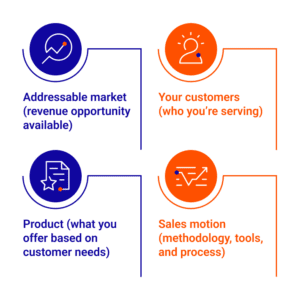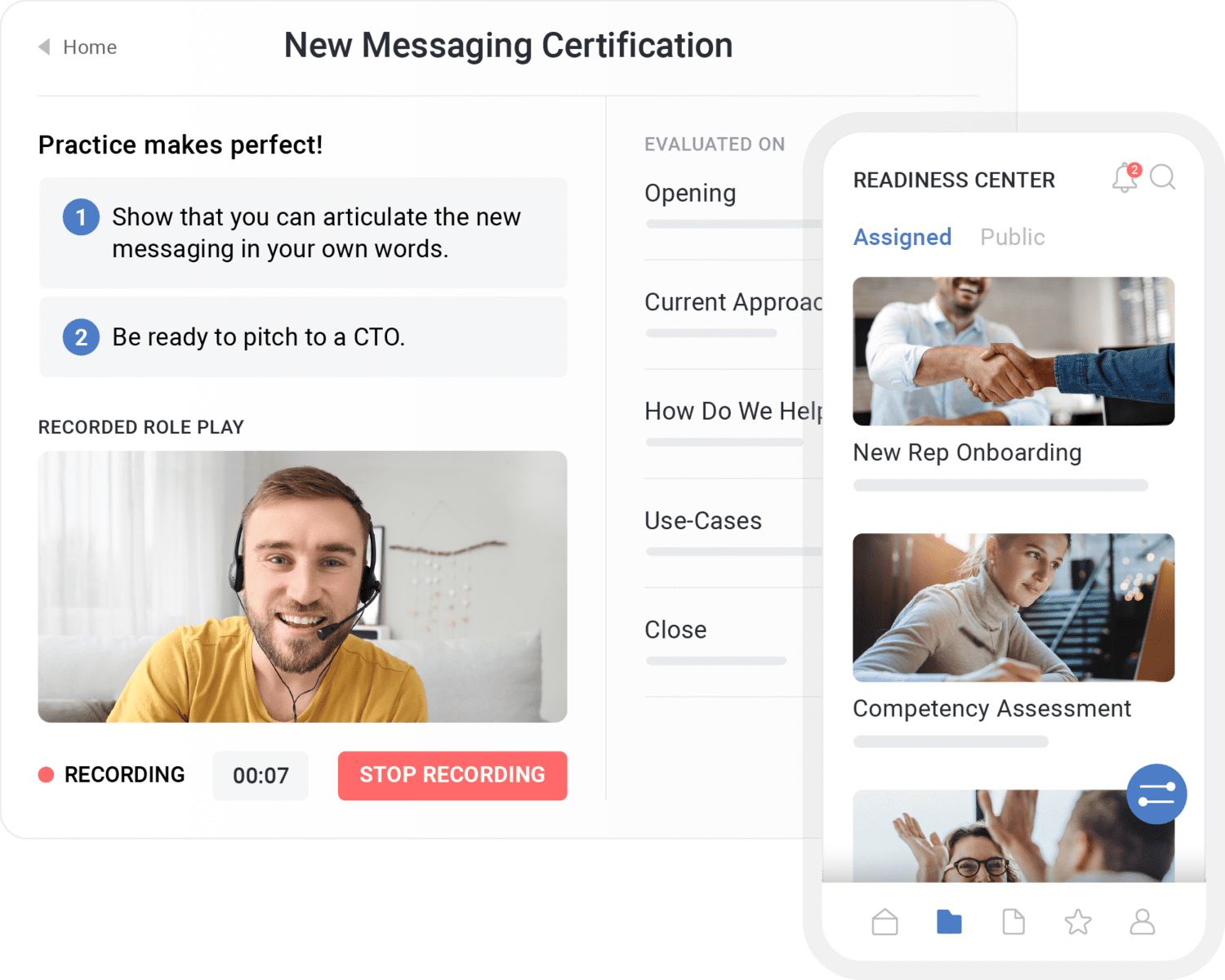It’s been reported by the Sales Management Association that the average sales new hire spends 10 weeks in training, only becoming productive after 11.2 months. Onboarding new sales talent is a huge investment for most organizations, and getting it right can be a make or break for your business.
It’s not surprising that effective onboarding services that meet or exceed sales reps’ expectations can improve quota attainment by 16.2%, but what is surprising is how many organizations aren’t truly maximizing their reps’ time during their onboarding phase.
In this post, we wanted to share our tips for getting your sales reps ramped up quickly and enabling them to start crushing revenue targets sooner.
1. Put people before processes
It may sound simple, but in order for your onboarding efforts to be truly effective, you want to make sure that you have the right people in the right roles. When you’re hiring new reps to join your team, it’s important to evaluate based on performance metrics from their previous roles, but also soft skills.
Your reps are the faces of your company in the market, so it’s important to ensure that on top of having role-related knowledge, you’re screening reps for qualities like empathy, grit, and creativity. Having the right people on your team will make them a lot more receptive to your onboarding efforts — and help you reach your revenue targets faster.
2. Establish what success looks like for sales onboarding
When we talk about success in the onboarding phase, we’re looking at two key outcomes. Firstly, a successful ramp-up period that gives reps a complete understanding of your business and how it operates. This can include sales processes like identifying qualified opportunities and market knowledge. Then, there’s long-term success. This includes things like revenue targets and quotas — the things your reps will be measured by when they’re fully on board.
If you’re not sure of what your targets are, there’s no way you’ll be able to empower your reps to work towards them. Make sure to take the time to set measurable goals so that your team has a clear understanding of your expectations from day one. Doing so will also help provide context as your reps move through the onboarding process.
3. Build a blueprint for sales onboarding
After establishing a clear set of goals, it’s important to ensure your onboarding program maps to the skills, processes, and content that will help your reps achieve those goals — both short and long-term. Organizing your onboarding program in this way helps to clearly define the competencies that are needed to succeed as well as helps you and your reps understand how far along they are in the onboarding process.
Within your blueprint for your sales onboarding, make sure you’re focusing on the knowledge areas that are most important to your business. These might include:
- Addressable market (revenue opportunity available)
- Your customers (who you’re serving)
- Product (what you offer based on customer needs)
- Sales motion (methodology, tools, and process)

4. Enable your reps with on-demand learning
By adopting an on-demand learning approach, you give reps the opportunity to learn at their own pace, rather than waiting around for calls to shadow or for a supervisor to walk them through a particular selling approach.

Having on-demand resources available to your reps to review and even use for virtual role-plays will help your sellers get up to speed faster. It will also give them more confidence in their skills as they can be honed and evaluated in a virtual environment!
Some examples of common on-demand training modules include:
- Industry news and trends: Help reps start speaking your prospects’ language from the get-go by familiarizing themselves with how to speak about hot topics in your space and navigate industry jargon.
- Objection handling: Compile the most common objections that reps at your company face and provide strategies for overcoming them.
- Pitch presentations: Give your new reps the opportunity to learn and understand how you present your product to buyers.
- Veteran tips: Have your most seasoned sales reps provide their top tips for excelling in the field. It’s always great to hear advice from a high-performing peer!
- Sales process: Provide an overview of what the sales process at your organization looks like, including what reps are expected to do at each stage.
- Competitive insights: Ensure your reps have a strong understanding of how your product offering differs from your competitors and what makes yours stand out.
The best part about making these specific training modules available on-demand is that it doesn’t take time away from your high-performing reps who are already busy selling, and it also ensures consistency in the onboarding process.
5. Test and measure key competencies
When a sales rep isn’t fully prepared to answer questions and address the needs of prospects, they will struggle to hit their sales targets and quotas. In fact, in the last year, 57% of sales reps were expected to miss their quotas.
As your reps move through the onboarding process, it can be difficult to truly gauge their comprehension levels and how close they are to start driving revenue. What helps is being able to track onboarding session completion rates, as well as conducting knowledge tests along the way. This will allow you to identify knowledge gaps and give more training attention where it’s needed.
As a manager, some key knowledge areas you’ll want to test for include:
- Product knowledge — especially the ability to effectively demo your product
- Competitive intel
- Pricing packages
- Buyer personas
- Post-sale services and support
- Prospecting process
- How and when to qualify a lead
- Vertical- or territory-specific knowledge
- Ability to use your CRM

Using data is really the only concrete way to determine how prepared your reps are to sell. A Readiness Index is a great way to get a holistic view of reps’ sales readiness, factoring in coaching, knowledge, and skill.

6. Implement a sales everboarding strategy
On-the-job learning shouldn’t stop with onboarding. In the sales world especially, messaging, techniques, product offering, and strategy are constantly evolving. So it’s integral to ensure ongoing sales readiness with continuous learning programs.
There are a number of different ways you can promote ongoing learning within your sales organization, but some of our favorites include:
- Micro-learning modules: These are great for quick tips and competitive intel
- Certification programs: Ideal for new product and messaging rollouts
- Quizzes: Perfect for gauging knowledge retention so sales leaders know when to coach
- On-the-go learning: Provide mobile access to your training modules with an app or mobile dedicated site so they can be accessed any time, anywhere
As a sales leader, it’s important to recognize that the way you structure your onboarding program and enable your reps from day one has a huge impact on your bottom line. Taking these considerations into account will help you ramp up your sales reps faster and accelerate your time to revenue. Who doesn’t want that?
For more information, download “5 Must-Haves for Any Sales Everboarding Strategy Checklist.”




 By Helen Waite
By Helen Waite
 By Christian Pieper
By Christian Pieper
